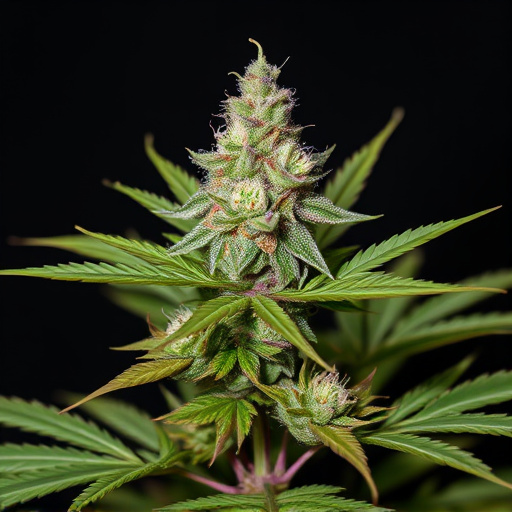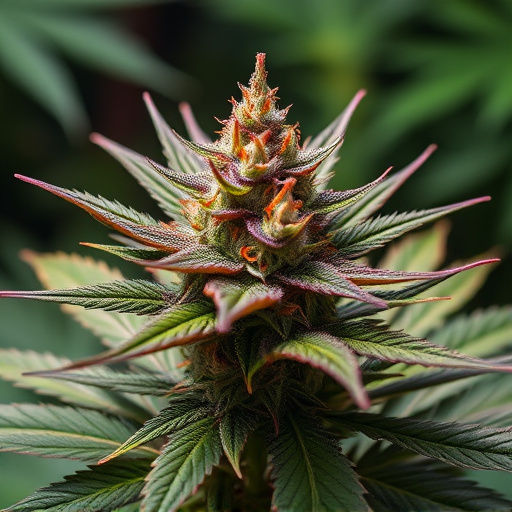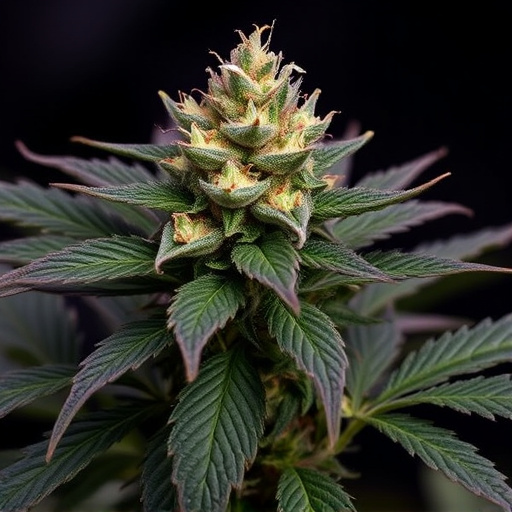The most potent strains of cannabis, characterized by high THC levels (often exceeding 20%), interact with the human body's endocannabinoid system (ECS). This interaction significantly impacts mood, memory, pain perception, appetite, and other physiological functions. While these strains offer therapeutic benefits for managing chronic conditions, they also carry risks such as increased heart rate, anxiety, paranoia, altered time perception, and changes in blood pressure and breathing patterns. Individual responses vary based on tolerance, biochemistry, and strain specifics.
“Unveiling the profound impact of high-THC strains on both mind and body is essential in today’s evolving cannabis landscape. This article delves into the intricate science behind tetrahydrocannabinol (THC), exploring its unique interactions with our endocannabinoid system. We dissect physiological responses, from short-term effects to potential long-term health implications.
Further, we navigate the complex relationship between high-THC strains and mental health, considering mood disorders, individual sensitivity, and therapeutic versus adverse outcomes. Understanding the definition and risks of most potent cannabis strains empowers consumers to make informed decisions, ensuring responsible usage.”
- The Science Behind THC and Its Effects on the Body
- – How THC interacts with the endocannabinoid system
- – Physiological responses to high-THC strains
The Science Behind THC and Its Effects on the Body

The science behind THC, the primary psychoactive compound in cannabis, reveals its profound impact on both the mind and body. When consumed, THC binds to specific receptors in the brain, known as CB1 and CB2 receptors, which play a crucial role in regulating mood, memory, perception of pain, and appetite. This interaction leads to the well-known effects associated with high-THC strains, such as heightened sensory perception, altered time perception, and relaxation or euphoria.
The most potent strains of cannabis often contain THC levels exceeding 20%, significantly stronger than the average legal limit. These super-potent strains can deliver intense experiences, but they also carry increased risks. Research suggests that high THC concentrations may lead to anxiety, paranoia, and psychotic episodes in susceptible individuals, especially when consumed unacquainted with such potent varieties. Understanding the science behind THC is essential for consumers, as it empowers them to make informed decisions about their cannabis consumption, especially when exploring the effects of the most potent strains available on the market.
– How THC interacts with the endocannabinoid system

The most potent strains of cannabis contain tetrahydrocannabinol (THC), a compound known for its significant interaction with the human body’s endocannabinoid system (ECS). This intricate network of receptors and molecules plays a vital role in regulating various physiological processes, including mood, memory, appetite, and pain perception. THC imitates the natural endocannabinoids produced by our bodies, binding to specific receptors like CB1 and CB2. This mimicry triggers a cascade of effects, leading to the characteristic euphoria, relaxation, and heightened sensory experiences associated with cannabis consumption.
In addition to its psychoactive properties, THC’s interaction with the ECS has therapeutic implications. It can modulate pain signals, reduce inflammation, stimulate appetite, and even exhibit anti-anxiety and anti-nausea effects. This is why many people turn to high-THC strains for medical purposes, particularly in managing chronic conditions and alleviate symptoms associated with various ailments.
– Physiological responses to high-THC strains

The most potent strains of cannabis can evoke powerful physiological responses due to their high tetrahydrocannabinol (THC) content. THC, the primary psychoactive compound in cannabis, directly interacts with the endocannabinoid system (ECS), which plays a significant role in regulating various bodily functions such as mood, memory, appetite, and pain perception. When consumed, high-THC strains can lead to increased heart rate, heightened sensory perception, and altered time perception—common experiences often referred to as “being high.”
These strains may also induce physiological changes like dilated pupils, increased blood pressure, and changes in breathing patterns. Some individuals may experience heightened anxiety or paranoia, while others might feel a sense of euphoria and relaxation. The intensity of these responses can vary widely from person to person, depending on factors such as tolerance, individual biochemistry, and the specific strain characteristics.
High-THC strains, often considered the most potent forms of cannabis, significantly impact both the body and mind due to their interaction with the endocannabinoid system. These strains evoke physiological responses that can range from heightened sensory experiences to changes in mood and cognition. Understanding how THC influences our bodies is crucial for navigating the effects of these powerful varieties, highlighting the importance of informed consumption.














